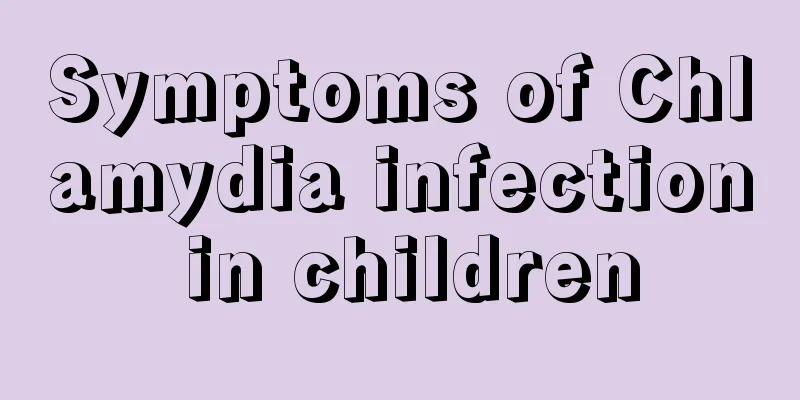What to do if premature babies have high jaundice

|
Jaundice is a common phenomenon in newborns. Jaundice is generally divided into two types, namely physiological jaundice and pathological jaundice. For premature babies, if it is physiological jaundice, there is no need to worry too much. Parents only need to do the relevant work in terms of diet and daily care. But if it is pathological jaundice, then parents must take their children to the hospital for examination and treatment in time. 1. What to do if premature babies have high jaundice It is better to go to a regular hospital for treatment, because neonatal jaundice can be divided into pathological and physiological. Avoiding liver damage is the main thing. Medically, jaundice in babies under one month old (within 28 days of birth) is called neonatal jaundice. Neonatal jaundice refers to a disease characterized by jaundice of the skin, mucous membranes and sclera due to abnormal bilirubin metabolism in the neonatal period. This disease can be divided into physiological and pathological types. Physiological jaundice appears 2 to 3 days after birth, reaches its peak on the 4th to 6th day, and disappears on the 7th to 10th day. It lasts longer in premature infants and, except for mild loss of appetite, has no other clinical symptoms. If jaundice appears within 24 hours after birth, does not subside within 2 to 3 weeks, or even continues to deepen and worsen, or reappears after subsiding, or jaundice begins to appear within one to several weeks after birth, it is pathological jaundice. Western medicine treatment: Light therapy: It is a simple and effective method to reduce serum unconjugated bilirubin. Place the newborn baby in a phototherapy box, protect both eyes with black eye masks to avoid damaging the retina, cover the perineum and anus with a diaper, and leave the rest of the body exposed. Use single-sided or double-sided light irradiation for 24-48 hours (generally not more than 4 days). Treatment can be stopped when bilirubin drops below 7 mg/dL. 2. Symptoms and signs of jaundice 1. Fever: Jaundice with fever is often seen in acute cholangitis, and is also accompanied by chills. Liver abscess, sepsis, and leptospirosis all cause moderate or even high fever; acute viral hepatitis or acute hemolysis often causes fever first, followed by jaundice. 2. Abdominal pain: Jaundice accompanied by severe colic or pain in the upper abdomen is often seen in bile duct stones, biliary ascariasis or liver abscess, primary liver cancer, etc. Viral hepatitis often presents with persistent distension and dull pain in the right upper abdomen; liver abscess or liver cancer may also present with dull pain or distension in the upper abdomen or right upper abdomen. 3. Skin itching: Jaundice accompanied by skin itching is often seen in jaundice caused by intrahepatic and extrahepatic bile duct obstruction (cholestasis), such as common bile duct stones, cancer or primary biliary cirrhosis, recurrent jaundice during pregnancy, etc. Some patients with hepatocellular jaundice may also experience skin itching, while hemolytic jaundice often does not cause skin itching. 4. Urine and feces color: In obstructive jaundice, the urine is dark like strong tea, while the stool may become lighter in color. When the bile duct is completely blocked, the stool may be clay-colored. In patients with hemolytic jaundice, the urine is soy sauce-colored and the stool color is also darker; in patients with hepatocellular jaundice, the urine color is slightly darker and the stool color is light yellow. 5. Loss of appetite, upper abdominal distension, nausea and vomiting: Patients with viral hepatitis often experience indigestion symptoms such as loss of appetite, nausea, vomiting, and upper abdominal fullness before jaundice appears. Most patients also dislike greasy food. |
<<: Symptoms of hypertonia in premature infants
>>: What to do if a premature baby has a fever
Recommend
What to do if a newborn baby has jaundice
What should we do if a newborn baby has jaundice ...
Congenital discoid meniscus in children
Almost everyone knows that the meniscus is a very...
What should we do if children have weak spleen and stomach?
When children are young, they may not like to eat...
What to do if your child's buttocks itch
If a child's buttocks become itchy, it may be...
Grainy pimples on baby's neck
Many young babies cannot speak yet, and can only ...
Child car seats
Do you know about child car seats? We all know th...
Reasons for newborns spitting up while sleeping
Anyone who has experienced feeding a baby knows t...
What causes low creatinine in children?
The product creatinine will appear in the metabol...
What to do if there are worm spots on the baby's face
Worm spots are medically known as pityriasis alba...
Can a one-year-old baby be bathed with floral water?
Floral water is used to prevent mosquito bites or...
What causes knee pain in children?
Nowadays, many friends suffer from diseases such ...
What are the symptoms of adolescent growth and development
What are the symptoms of adolescent growth and de...
How often should babies be fed?
There are many mothers who don't know how oft...
What to do if there is a gap between the child's front teeth
We all know that the teeth that children start to...
What is the cause of vulvitis in young girls?
Many parents believe that girls do not need to pa...









